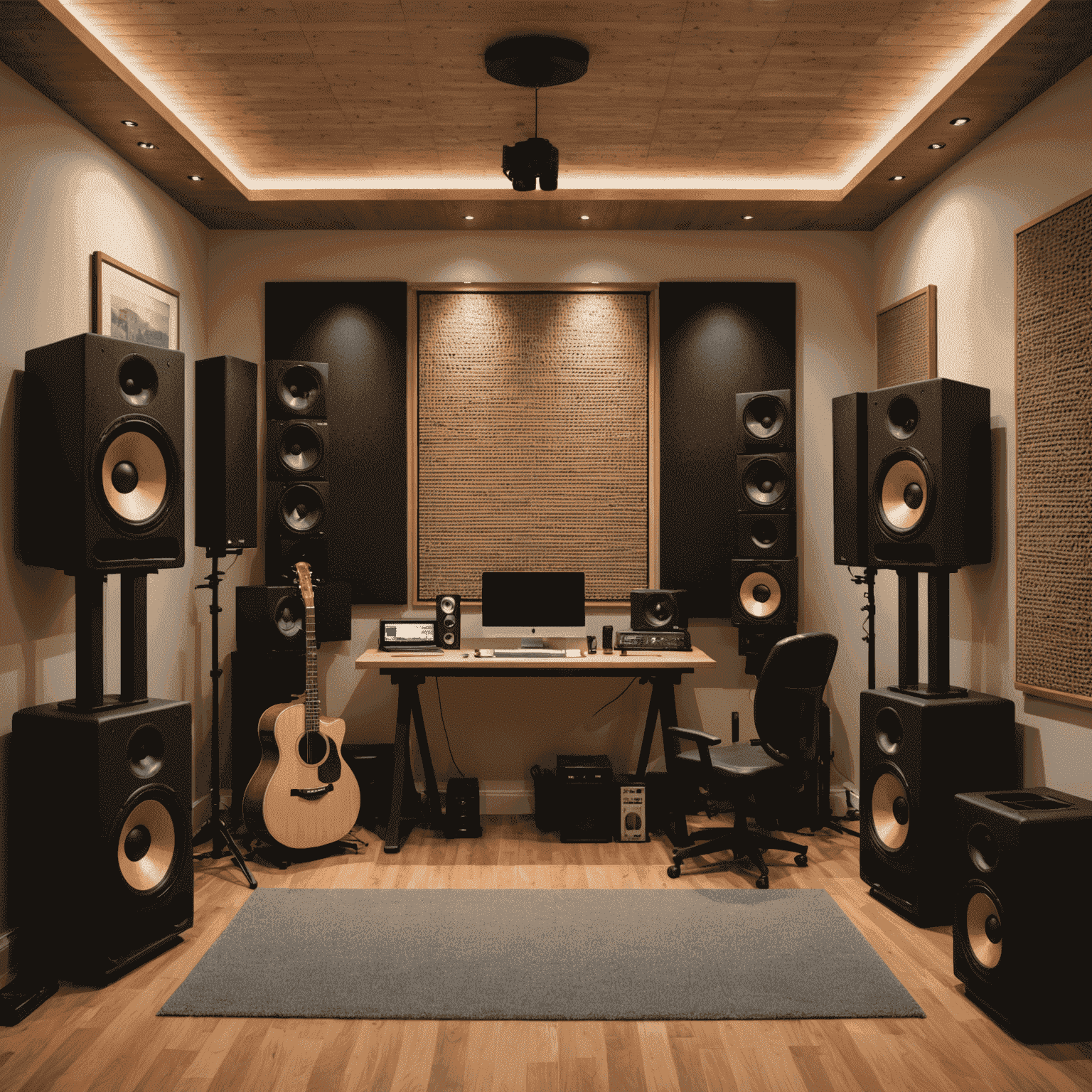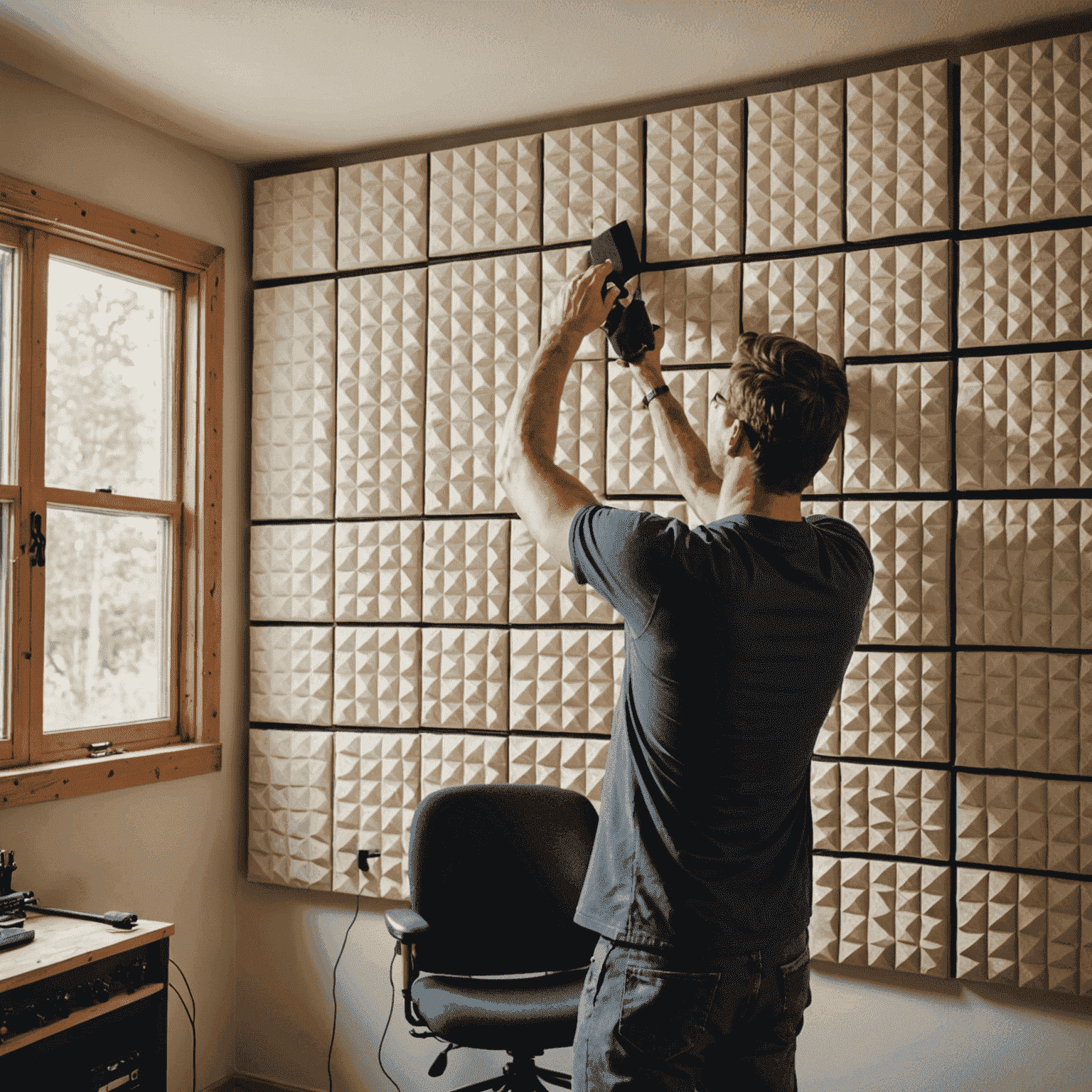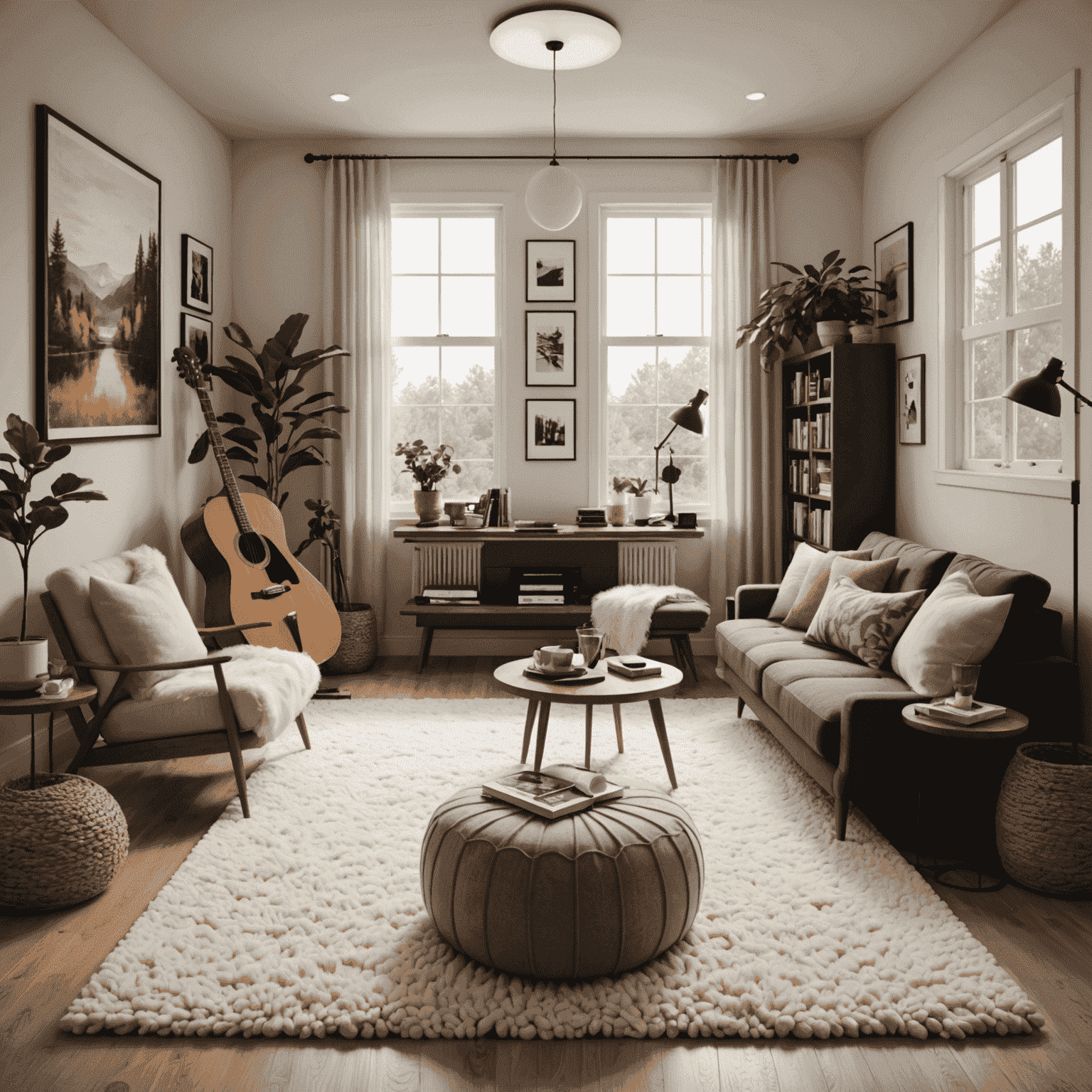Acoustic Treatment: Improving Your Room's Sound

Creating a professional-sounding podcast or vocal recording starts with the space you're in. Let's explore some effective acoustic treatment techniques to enhance your home studio's sound quality.
1. Identify Problem Areas
Before diving into treatments, listen to your room. Clap your hands and pay attention to any echoes or reverberations. These are the areas you'll want to focus on.
2. Add Absorption
Acoustic foam panels are a great start. Place them at reflection points where sound bounces off walls before reaching your ears. Don't forget about corners – bass traps can help control low-frequency buildup.

3. Diffusion for Balance
While absorption is crucial, too much can make your room sound "dead." Diffusers scatter sound waves, creating a more natural ambiance. Consider wooden diffuser panels for a warm, organic look.
4. Mind Your Furniture
Bookshelves, soft furnishings, and even plants can act as natural sound absorbers. Arrange them strategically to complement your acoustic treatments.
5. Don't Forget the Floor
Hard floors can cause unwanted reflections. A thick area rug can dramatically improve your room's acoustics while adding to that cozy, inviting feel.

6. Create a Vocal Booth
For the best vocal recordings, consider setting up a small, treated area specifically for your microphone. This can be as simple as a corner with extra absorption or a portable reflection filter.
7. Test and Adjust
After applying treatments, record some test audio. Listen back and make adjustments as needed. Remember, acoustic treatment is often a process of fine-tuning.
Pro Tip:
Balance is key. Aim for a room that sounds natural and comfortable, not completely devoid of character. Your home studio should inspire creativity while providing clean, professional-sounding recordings.
By implementing these acoustic treatment techniques, you'll be well on your way to creating a home studio that rivals professional setups. Remember, the goal is to create a space that not only sounds great but feels inviting and conducive to your creative process. Happy recording!